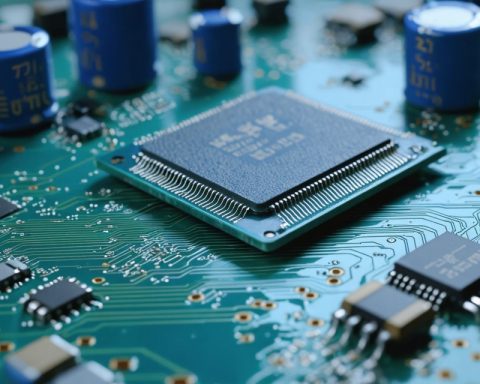A new era of smartphones is upon us, as two groundbreaking devices are set to take the market by storm. Leaked information has unveiled the incredible features packed into the Galaxy Z Fold 6 and Z Flip 6, set to redefine user experience.
The Galaxy Z Fold 6 boasts a sleek, lightweight design, thanks to the innovative Slim Flex Hinge and Armor Aluminum chassis. With an IP48 rating for water and dust resistance, this device is ready for any adventure. The integration of AI technology enhances user interaction through features like AI Note Summary and Interpreter, promising a seamless experience like never before.
Performance is key, and the Z Fold 6 does not disappoint. With significant improvements in CPU, GPU, and NPU speeds, coupled with impressive camera capabilities including a 50 MP lens, users can expect stunning photos and enhanced efficiency. The battery life has been optimized, delivering extended usage without compromising on power.
On the other hand, the Z Flip 6 offers a more compact design with unique camera accents and enhanced AI capabilities. The addition of a prime 50 MP lens promises superior photo quality, especially in low-light conditions. The increased battery size ensures extended run-times, making it a reliable companion for everyday use.
Both devices feature innovative displays and cutting-edge technology, setting a new standard for smartphones in the market. With these advancements, Samsung continues to push the boundaries of what is possible in the world of mobile devices.
Innovations in Bio-metric Technology Reshaping Smartphone Security
In the relentless pursuit of enhancing user experience and security, smartphone manufacturers are revolutionizing the way we interact with our devices. Beyond the impressive specs of the Galaxy Z Fold 6 and Z Flip 6, a key feature that is reshaping the landscape of smartphone technology is the integration of advanced biometric authentication methods.
What are the key questions surrounding biometric technology in smartphones?
One important question that arises is the level of security biometric authentication methods offer compared to traditional password-based systems. Users may also question the privacy implications of storing biometric data on their devices. Additionally, the accessibility and reliability of biometric systems for all users, including individuals with disabilities, are crucial considerations.
How do biometric technologies improve smartphone security?
Biometric authentication methods such as facial recognition and fingerprint scanning offer a more secure and convenient way to unlock smartphones and authenticate transactions. These technologies provide a personalized layer of security that is unique to each user, making it harder for unauthorized access to occur.
What are the challenges or controversies associated with biometric technology in smartphones?
One of the key challenges is the potential vulnerability of biometric data to hacking or spoofing. Manufacturers must constantly update their systems to stay ahead of evolving security threats. There are also concerns about the ethical use of biometric data and how it is stored, shared, and accessed by third parties.
Advantages of biometric technology in smartphones:
– Enhanced security: Biometric authentication methods offer a higher level of security compared to traditional passwords.
– Convenience: Users can unlock their devices or authenticate transactions quickly and effortlessly.
– Personalization: Biometric systems provide a personalized user experience tailored to each individual.
Disadvantages of biometric technology in smartphones:
– Vulnerability: Biometric data can potentially be compromised, leading to security risks.
– Privacy concerns: Storing biometric data raises privacy issues and ethical considerations.
– Accessibility: Some users may face challenges with certain biometric methods, requiring alternative security options.
As smartphone manufacturers continue to innovate and incorporate biometric technologies into their devices, it is essential to strike a balance between enhanced security and user privacy. By addressing key challenges and controversies, the industry can pave the way for a more secure and user-friendly mobile experience.
For further insights into the evolution of smartphone technology, visit Samsung.










